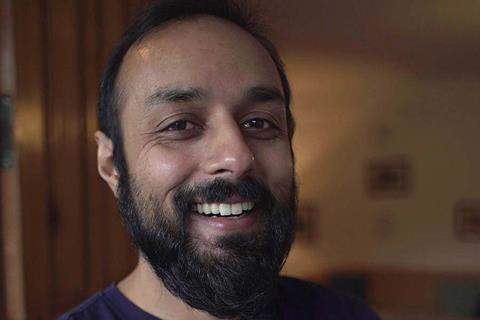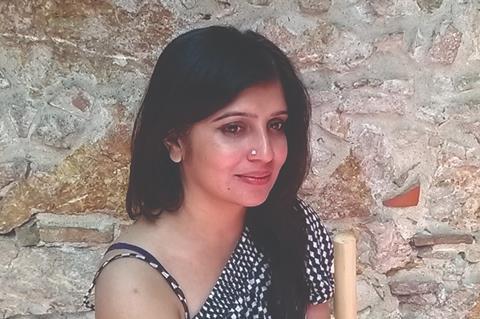While Indian documentaries are riding high at international festivals, at home filmmakers are struggling to connect them to cinemagoers.

In recent years, Indian documentary films have been well represented at international festivals such as Sundance as filmmakers turn their gaze on a kaleidoscopic range of stories and characters, supported by a number of international documentary funds.
In 2024 so far, Gurvinder Singh’s Trolley Times about India’s 2020 farmers’ protests showed at Rotterdam, while Anirban Dutta and Anupama Srinivasan’s look at the secret lives of moths, Nocturnes, won the World Cinema Documentary special jury award for craft at Sundance in January. It is the latest in a line of Indian docs to be recognised in Park City — in 2023, Sarvnik Kaur’s Against The Tide, about two close friends from the Koli fishing community, won the special jury award for verite filmmaking.
The year before, Shaunak Sen’s All That Breathes, a depiction of brothers who rescue birds of prey from the smog of Delhi, bagged the world cinema documentary award before going on to win the best documentary prize in Cannes later that year. In 2021, Rintu Thomas and Sushmit Ghosh’s Writing With Fire, a profile of the only Dalit women-led Indian newspaper, received the Sundance audience award.

“The international documentary funds have moved the needle in terms of who is telling whose story,” says Ghosh. “There is interest in our stories — but things are no longer being seen through the white lens.”
Writing With Fire — which was made with support from Sundance, Tribeca, International Documentary Film Festival Amsterdam (IDFA), Chicken and Egg Pictures and Alter Cine Foundation — went on to be the first Indian film nominated in the feature documentary category at the Oscars in 2022, while Kartiki Gonsalves’ The Elephant Whisperers, about a tribal couple’s bond with an orphaned elephant, became the first Indian documentary to win an Oscar in the short film category in 2023.
“Indian documentaries are filling the void left by fiction films that moved away from nuanced storytelling,” argues Vinay Shukla, director of 2023 festival favourite While We Watched, about journalist Ravish Kumar and his fight to stay relevant at a time when Indian TV news has been hit by budget cuts.
“Our documentaries in the past emerged from a socialist aesthetic,” echoes Shabani Hassanwalia, editor and producer at feminist think-tank The Third Eye. “The new filmmakers are adapting to the international language of filmmaking — the dramatic curves, the three-act structure, the focus on the arc of the characters.”
Under The Third Eye’s mentorship, a group of underprivileged women made a small film with a self-explanatory title, Raat: Night Time In Small Town India, which was nominated in the shorts category at the International Documentary Awards in 2023.
Connecting at home
But as filmmakers engage with the international industry, they are finding it harder than ever to connect with Indian audiences at home.
“Young filmmakers pitch to commissioning agents, attend workshops, labs and market sessions worldwide. Their films do often look better and are technically advanced,” says veteran documentarian Anand Patwardhan. “But at times there is a tendency to use a cinema language and style understood by consumers outside the country.”
Patwardhan is best known for political films including Bombay: Our City (1985) about Mumbai slum-dwellers, In The Name Of God (1992) about the demolition of Babri Masjid and the rise of Hindu fundamentalism, and Jai Bhim Comrade (2011), which focuses on the violence amid the caste system in India.
In his latest The World Is Family, Patwardhan turns his camera on his late parents. Through their journey he captures the tumultuous history of India and sees its fraught present in the light of its past. The World Is Family won the editing award at IDFA in 2023.
There is also the spectre of censorship. “Government censorship has always existed but is a lot worse now,” he says. “Even the social media space is policed. There are various systems of control like putting age restrictions on content to reduce a film’s reach or putting false copyright strikes against a film. The space for liberal, secular filmmaking is shrinking.”
Most documentary filmmakers work around this by refraining from applying for a censor certificate, which means their films are not eligible for India’s national film awards and cannot play in theatres.

“It’s always a huge challenge to take your film out to the audience. In India it is doubly so,” says Miriam Chandy Menacherry, whose From The Shadows, about trafficked women and children along India’s Northeastern borders and the struggles of the activists fighting to get them justice, was supported by Film Independent’s Global Media Makers programme in 2022. She is now co-producing Sourav Sarangi’s Fair-Home Fairy-Tales through Film Independent’s Fiscal Sponsorship programme. It is about a puppet artist recreating her mother’s journey from Burma to Bengal during the Second World War.
Each time an Indian documentary wins an award, it is swiftly accompanied by a familiar query — how to watch it in India? “There has been a transition for the better when it comes to documentaries and the audience. It’s the distribution mechanism in the middle that hasn’t evolved, it needs to be organised and consolidated,” says Shukla.
An official theatrical release for a documentary is almost non-existent in India, with a lack of independent cinemas to show them. The 2016 documentary An Insignificant Man, on the growth of the Aam Aadmi Party and its leader Arvind Kejriwal, was the rare doc to have secured a limited commercial release and proved a surprise hit.
Other Indian documentaries that reach Indian cinemas include Faiza Ahmad Khan’s Supermen Of Malegaon in 2012 and Deepti Kakkar and Fahad Mustafa’s Katiyabaaz (Electricity Thief), about the theft of power in Uttar Pradesh, in 2014.
Kamal Gianchandani, CEO of cinema chain PVR Inox Pictures, believes there is a small market in India and notes that some documentaries, such as Fahrenheit 911 (2004) and ones focusing on Korean superstars BTS and UK band Coldplay, have delivered good numbers from Indian audiences over the years.
Gianchandani says producers must play their part. “We are open. We want to play everything. But it’s a call that the producers are making. They are taking the films direct to streaming platforms,” he says.
While All That Breathes was acquired by HBO Documentary Films for TV distribution and managed to reach India on the JioCinema streaming platform, with which HBO has an agreement, and Archana Phadke’s About Love, a frank look at her extended family, played on Mubi in 2019, they are two rare exceptions. The US streamers do not take on any Indian arthouse documentaries either.
Finding audiences
Which means it is via film festivals such as the India’s International Documentary and Short Film Festival of Kerala (IDSFFK), Documentary Resource Initiative’s DocEdge in Kolkata, and Cinema of Resistance that most Indian documentaries find a way to a homegrown audience.
Vikalp@Prithvi film club organises free documentary screenings twice a month in Mumbai. Samarth Mahajan who saw his 2021 film Borderlands, about everyday lives along the Indian borders, secure a distribution deal in South Korea but not in India. He organised non-traditional screenings in 25 film clubs across 20 cities and did his outreach and marketing through young film influencers on Instagram. He is now screening the film for free on YouTube.

With filmmakers forced to look at every aspect — from finance to writing and shooting to taking the film to the audience — it is not leaving them with time to research, write, shoot and edit the next film. “It begins and ends with us,” agrees Shukla. “We have been talking to each other, but most makers are too tired after making a film to get involved in distribution.”
Instead, the way to Indian audiences is through selective, controlled releases in boutique arthouse theatres and pop-up venues, endorsed and supported by influential voices on social media and through word of mouth. Revenue sharing via pay-per-view online screenings on YouTube or Vimeo could reach a receptive, dedicated audience.
According to Patwardhan, recovering costs in India is hard, so international distribution is desirable. “I believe that genuine lovers of documentaries should put money into local and international distribution rather than just filmmaking itself. Powerful and useful films that continue to be made with or without big money need to circulate as widely as possible through the world.”
Shukla believes the balance needs to be reset. “We need evangelists to build a new viewing culture,” he says.
“The platforms and gatekeepers need to open their minds,” says Ghosh, “Why not hedge your bets on films that are getting laurels for the country, something that fiction hasn’t been able to do?”
In December, UK-based sales agent Dogwoof acquired international rights to Nocturnes. But for Dutta and Srinivasan, the dream is to release the film in theatres in India. “It will be such a joy if we can get children [in India] to come and see this film,” Dutta told The New Indian Express. “Forests are disappearing, environment and nature are being taken away from us. We want to bring the awareness of this to our children and young people.”






![The Brightest SunScreen[Courtesy HKIFF]](https://d1nslcd7m2225b.cloudfront.net/Pictures/274x183/3/5/0/1448350_thebrightestsunscreencourtesyhkiff_312678.jpg)


















No comments yet